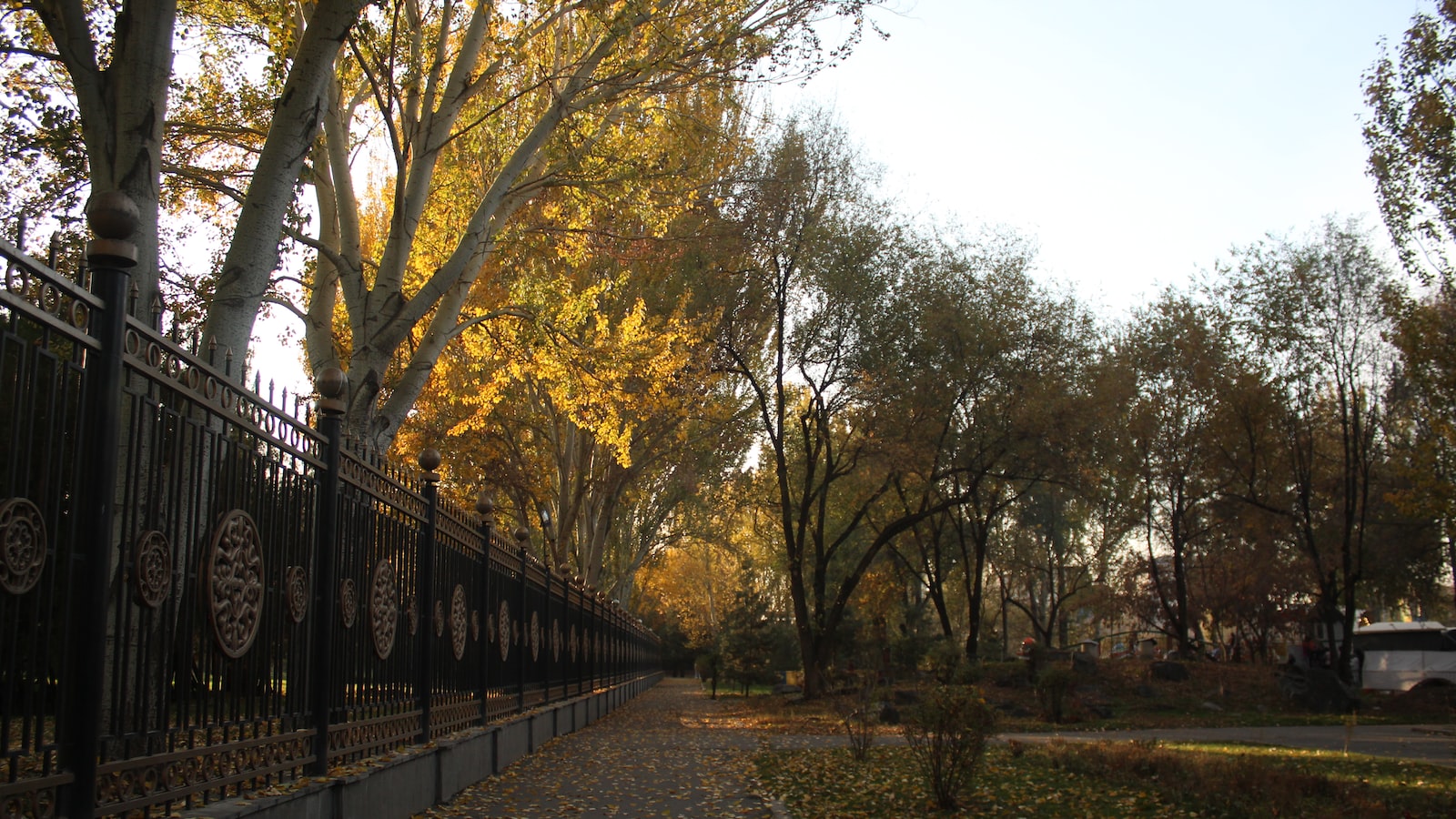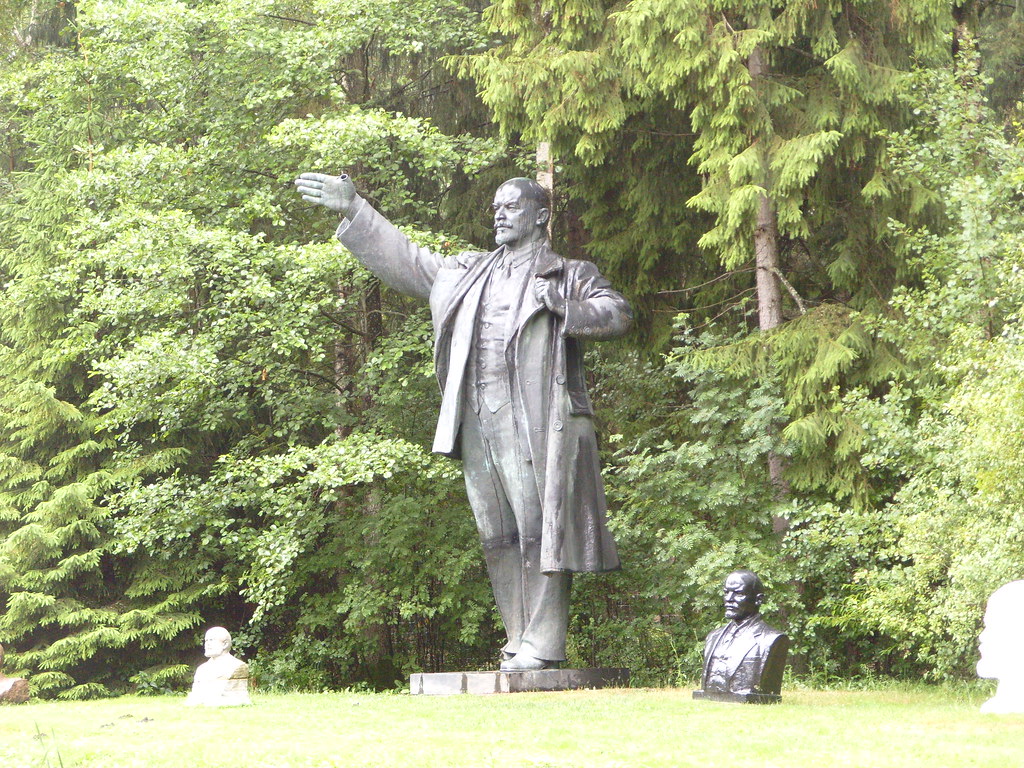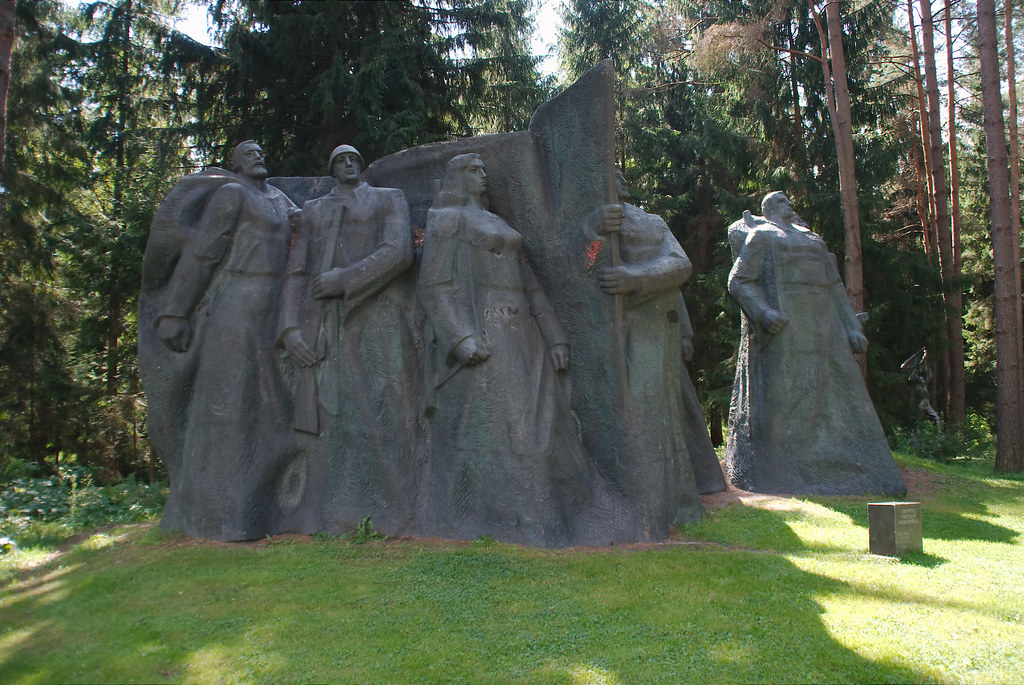Welcome to the enigmatic world of Grūtas Park – where history, politics, and art intertwine to create a provocative and ethereal experience. Nestled deep within the mesmerizing landscape of Lithuania, this unique attraction has garnered its fair share of controversy, leaving visitors divided between awe and astonishment. With a compelling backdrop of history and a collection of Soviet-era relics, the park beckons us to ponder whether it is a controversial tribute or an infernal showcase. Regardless of one’s perspective, the Art of Grūtas Park is undeniably a portal to a vivid past, where the echoes of a tumultuous era resound with both reverence and ambiguity.
1. Unveiling Grūtas Park: Exploring the Controversial Soviet Art Collection
Enter a world frozen in time as you step foot into Grūtas Park, a unique open-air museum located deep in the heart of Lithuania. This intriguing destination offers visitors an unparalleled opportunity to explore and reflect upon the collection of Soviet-era statues, monuments, and artworks that were once scattered across the country. Grūtas Park, often referred to as “Stalin’s World,” provides a captivating window into a bygone era, offering a nuanced perspective on the complex and controversial history of the Soviet Union.
As you journey through the park’s meticulously curated grounds, prepare to be immersed in an atmosphere of both eerie allure and historical significance. Marvel at the imposing statues of political figures such as Lenin or Stalin, as they stand stoically with bold inscriptions proclaiming their influential presence. Explore the vast exhibition of Soviet propaganda posters, encapsulating a time when ideologies clashed and the world was divided. The park’s verdant landscapes provide a stunning backdrop to this fascinating collection, creating a serene environment that encourages contemplation and introspection.
- Step Back in Time: Experience a glimpse into the Soviet era through an extensive collection of statues, monuments, and propaganda artwork.
- A Controversial Narrative: Gain a deeper understanding of the complex historical context surrounding the Soviet Union and its impact on Lithuania.
- An Immersive Environment: Wander through beautifully landscaped gardens, offering a serene atmosphere for reflection and exploration.
- A Thought-Provoking Experience: Engage in critical thinking and introspection as you navigate between the contrasting ideologies portrayed in the collection.

2. The Debate Unveiled: Grūtas Park as a Tribute or Infernal Showcase?
In the midst of the Lithuanian countryside lies a controversial attraction, Grūtas Park, that has ignited a fierce debate within the nation. Visiting this peculiar destination transcends its mere status as a collection of Soviet-era statues. Is it a dignified tribute to a dark era of history, or does it serve as an infernal showcase of oppression and suffering?
Supporters argue that Grūtas Park is an unconventional museum, preserving a crucial part of Lithuania’s past and serving as a reminder of the atrocities committed during the Soviet occupation. The collection of statues, carefully arranged amidst lush greenery, enables visitors to reflect on the country’s struggle for independence and the resilience of its people. Moreover, this tribute acts as an educational platform, fostering discussions about political ideologies and the importance of safeguarding democracy. For those who seek a unique perspective on the Soviet regime, Grūtas Park provides an unparalleled experience.

3. Delve into the Depths: Understanding the Complexities of Grūtas Park’s Artistic Significance
When visiting Grūtas Park, one cannot help but be captivated by the enigmatic artistic significance that permeates its every corner. Delving into the depths of this fascinating historical site reveals a multitude of complexities that unravel before your eyes, leaving you in awe of its profound meaning and symbolism.
The park’s collection of sculptures, meticulously curated to represent the bygone era of Soviet rule, stands as a testament to the power of art in preserving and conveying history. These intricate installations serve as a haunting reminder of a tumultuous time, where emotions are bound to stir within every visitor. Bold, thought-provoking, and evocative, the artworks at Grūtas Park demand attention and compel us to reflect upon the human experience during those dark days.
- Each sculpture tells a unique story, shedding light on different aspects of Soviet ideology.
- Through careful observation, one can discern hidden details and symbols that add further layers of complexity to these masterpieces.
- The blend of realism and abstraction in the sculptures invites interpretation, encouraging visitors to explore their own understanding of the past.
- The juxtaposition of nature and art within the park’s serene setting creates a surreal atmosphere that adds to the overall ambiance and impact of the artwork.
As you wander through Grūtas Park, allow yourself to be immersed in its rich artistic tapestry. Let the intricacies of each sculpture weave a narrative that transcends time and connects us to the captivating complexities of history.

4. Revisiting Grūtas Park: Recommendations for a Thoughtful and Nuanced Experience
If you are planning a visit to Grūtas Park, be prepared for an unforgettable experience that offers a unique glimpse into Lithuania’s complex history. To make the most of your visit and fully appreciate the significance of this outdoor museum, here are a few thoughtful recommendations:
- Take your time: Grūtas Park is not your typical tourist attraction. It is a place that requires time for reflection and contemplation. Set aside a few hours to wander through the park at a leisurely pace, allowing yourself to absorb the powerful stories told by each exhibit.
- Read the plaques: Every statue and structure in Grūtas Park comes with a detailed plaque, providing historical context and shedding light on the darker periods of Lithuania’s past. Take the time to read these plaques, as they offer invaluable insight into the significance of each exhibit.
- Engage with the environment: Grūtas Park is a living museum that aims to recreate the atmosphere of Lithuania under Soviet rule. Immerse yourself in this unique environment by exploring the reconstructed barracks, watchtowers, and barbed wire fences. Let your imagination transport you to a different era.
Visiting Grūtas Park is an opportunity to reflect on an important chapter in Lithuania’s history. By adopting a thoughtful approach and following these recommendations, you can ensure a nuanced and thought-provoking experience that will leave a lasting impact on your understanding of the past.
In Summary
In a realm where history is etched into the very fabric of our existence, few exhibits can ignite as much debate and stir emotions like the Grūtas Park. As we bid farewell to this controversial tribute or infernal showcase, its legacy will forever linger in the minds and hearts of those who have journeyed through its maze.
As the last rays of sunlight caress the towering sculptures and weathered artifacts, a sense of unease permeates the air. Is it the weight of history bearing down upon us, or the uneasiness that comes with confronting a past riddled with conflicting perspectives? The questions linger, and the answers elude us still.
The Grūtas Park, a collection of Soviet-era relics meticulously gathered, serves as a testament to an era forever engraved in the annals of memory. Like fragile butterflies captured in time, each exhibit holds a story waiting to be unraveled—tales of hardship and resilience, tyranny and oppression, but also of resilience and hope.
As we navigate the winding pathways, we come face to face with the ghosts of a bygone era. The haunting eyes of statues that once lorded over cities, the echoes of propaganda blaring from rusty loudspeakers, and the oppressive symbols that cast a shadow on the past—these remnants stand as eerie reminders of a system once so omnipotent.
Yet, here lies the crux of the controversy that envelops Grūtas Park. Some argue that by preserving these monuments and displays, we risk glorifying a dark chapter in history—a chapter that brought sorrow and suffering to so many. Others, however, assert that without these reminders, we may forget the lessons learned, naively treading the path toward repetition.
In this infernal showcase, where the blurred lines between art and memoriality merge, it is not our place to pass judgment but to acknowledge the power it bestows upon us. Grūtas Park is as divisive as the history it represents—a mirror reflecting the multifaceted interpretations of the past, both bitter and sweet.
We depart from this captivating sanctuary, where the whispers of history reach out to us, reminding us of our collective responsibilities. Whether born from controversy or conceived as a tribute, the Grūtas Park stands testament to the enduring power of art to provoke thought, incite debate, and challenge our perceptions.
As we retreat, the question of whether this place is a tribute or a showcase lingers like a ghostly presence. An answer eludes us, and perhaps it always will—for the true essence of art lays in its ability to ignite discourse, spark introspection, and leave us pondering long after the curtains have fallen. And so, we bid adieu to the Grūtas Park, knowing that its enigmatic allure will forever captivate those daring enough to venture into the depths of its controversial brilliance.

